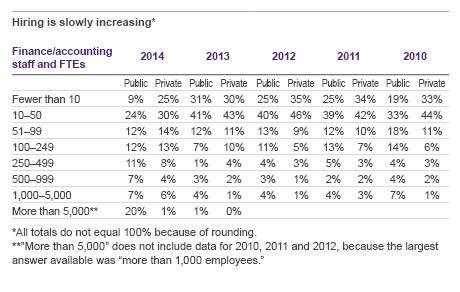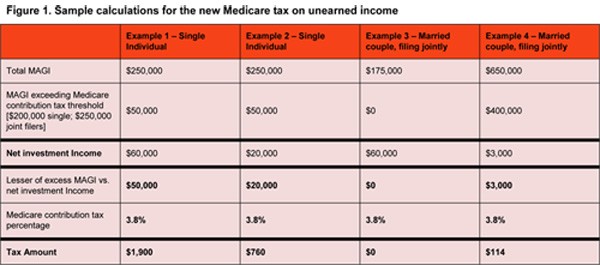Taxes and executive compensation
Post on: 15 Апрель, 2015 No Comment

Share this page:
The topic of executive compensation has long been of interest to academics, the popular press, and politicians. With the continued increase in executive compensation and resultant increase in pay disparity between those executives and the average worker, this issue is once again coming to the forefront of the public policy debate. Over the years, lawmakers have tweaked the tax code to limit disfavored forms of executive compensation, while regulators have increased the amount of disclosure companies must make. In the current Congress, Rep. Barbara Lee (D-Calif.) has introduced the Income Equity Act of 2011 (H.R. 382), which would amend the Internal Revenue Code to prohibit deductions for excessive compensation for any full-time employee; compensation is defined as “excessive” if it exceeds either $500,000 or 25 times the compensation of the lowest-paid employee, whichever is larger.
The objective of this study is to examine the impact of a prior limitation on deductibility of compensation, Internal Revenue Code Section 162(m). In contrast to much of the debate today on the need of the federal government to raise tax revenue, the primary goal of Section 162(m), which limited tax deductions for executive compensation, was not to raise revenue but to reduce excessive, non-performance-based compensation—in other words, to do something about excessive compensation that 1992 presidential candidate William Jefferson Clinton campaigned against. This paper will review the effectiveness of that provision in achieving its goals, and provide information on how much revenue it has raised or lost due to deductions for executive compensation. With respect to reducing excessive, non-performance-based compensation, many consider Section 162(m) a failure, including Christopher Cox, the then-chairman of the Securities and Exchange Commission, who went so far as to suggest it belonged “in the museum of unintended consequences.” Sen. Charles Grassley (R-Iowa), the then-chair of the Senate Committee on Finance, was even more direct, saying:
162(m) is broken. … It was well-intentioned. But it really hasnt worked at all. Companies have found it easy to get around the law. It has more holes than Swiss cheese. And it seems to have encouraged the options industry. These sophisticated folks are working with Swiss-watch-like devices to game this Swiss-cheese-like rule.
Since Section 162(m) passed nearly 20 years ago, both academic and practitioner research has shown a dramatic increase in executive compensation, with little evidence that it is more closely tied to performance than before. In this paper, we estimate that corporate deductions for executive compensation have been limited by this provision, with public corporations paying, on average, an extra $2.5 billion per year in federal taxes. They continue, however, to deduct the majority of their executive compensation, with these deductions costing the U.S. Treasury an estimated $7.5 billion per year. Because actual tax return data are, by statute, confidential, our estimates are somewhat imprecise, as we have to infer both the tax deductibility of executive compensation and the corporation’s tax status from public filings.
Our key findings are:
- Companies are allowed to fully deduct components of executive compensation that meet the IRS requirements to qualify as performance-based. One of those requirements is shareholder approval. However, only very general information is provided to shareholders. Therefore, shareholders are asked to, and usually do, approve plans without knowing whether the performance conditions are challenging or not, and the potential payouts from the plan.
- Performance pay, such as stock options and non-equity incentive plans, that meets the IRS requirements for the performance-based exception is fully deductible. Salary, bonuses, and stock grants are deductible but subject to a limit of $1 million.
- In 2010 our estimate was that there was $27.8 billion of executive compensation that was deductible. A total of $121.5 billion in executive compensation was deductible over the 2007–2010 period. Roughly 55 percent of that total was for performance-based compensation.
- Seemingly tax-sophisticated corporations seem not to care about the restrictions on deductions and continue to pay nondeductible executive salaries. The number of executives receiving salary exceeding the maximum deductible threshold of $1 million actually increased from 563 in 2007 to 594 in 2010.
- For all that Section 162(m) is intended to limit excessive executive compensation, it is the shareholders and the U.S. Treasury who have suffered financial losses.

- The code does not prohibit firms from paying any type of compensation; instead, they are prohibited from deducting that amount on their tax return. The result is decreased company profits and diminished returns to the shareholders.
- Assuming a 25 percent marginal tax rate on corporate profits (a conservative estimate), revenue lost to the federal government in 2010 from deductible executive compensation was $7 billion, and the foregone federal revenue over the 2007–2010 period was $30.4 billion. More than half the foregone federal revenue is due to taxpayer subsidies for executive performance pay.
1. Background
Section 162 of the Internal Revenue Code covers trade and business expenses. As put forth in Section 162(a), entities are allowed as a deduction all the ordinary and necessary expenses paid or incurred during the taxable year in carrying on any trade or business, including, as noted in Section 162(a)(1), a reasonable allowance for salaries or other compensation for personal services actually rendered.
However, a number of sections of the Internal Revenue Code—in particular, sections 162(m), 162(m)(5), 162(m)(6), and 280(g)—limit the deductibility of executive compensation. Adopted in 1993, Section 162(m), which applies to publicly traded corporations, limits the deduction for executive compensation to $1 million per covered individual, 1 with an exception for qualified performance-based compensation. That is, a company can deduct $1 million of non-performance-based compensation per covered individual and an unlimited amount of performance-based compensation.
In contrast to Section 162(m), sections 162(m)(5) and 162(m)(6) are more recent and narrowly targeted; they apply, respectively, to Troubled Asset Relief Program (TARP) participants and health insurers. They also set a lower limit on the tax deductions allowed for compensation at $500,000 per individual, with no distinction or exception for performance-based compensation. Section 162(m)(5) was adopted in 2008 and applies to the chief executive officer (CEO), chief financial officer (CFO), and next three highest paid officers of public and private entities that accepted money under TARP. Section 162(m)(6) becomes effective in 2013, and its limitations apply to most employees of health care providers. Section 280(g) does not apply to periodic payments to employees, but rather to change in control payments. 2 If the amount is equal to or greater than three times the covered individuals average W-2 compensation for the prior five years, the company forfeits the tax deduction for that payment, and the individual is subject to a 20 percent excise tax on the excess payment. As with sections 162(m)(5) and 162(m)(6), Section 280(g) contains no performance-based exception.
To discuss the tax deductibility of executive compensation, this paper will focus on Section 162(m) because of its broader reach. Remember, it is not limited to a specific sector of the economy; it limits the deduction for executive compensation in public corporations to $1 million per covered individual, with an exception for qualified performance-based compensation. To qualify as performance-based compensation, the following requirements must be met:
- The compensation must be paid solely on account of the executive’s attainment of one or more performance goals determined by an objective formula. These goals can include stock price, market share, sales, costs or earnings, and can be applied to individuals, business units, or the corporation as a whole;
- The performance goals must be established by a compensation committee of two or more independent directors;
- The terms must be disclosed to shareholders and approved by a majority vote; and
- The compensation committee must certify that the performance goals have been met before payment is made.
While Section 162(m) is intended to limit excessive executive compensation, this author sees several weaknesses or loopholes in the code. Regarding shareholder approval, companies need only give shareholders the most general terms when they put the compensation plan up for a vote. Shareholders are asked to, and usually do, approve plans without knowing whether the performance conditions are challenging or not, and the potential payouts from the plan. Those details are left to the compensation committee, which must set the terms no later than the first quarter of the company’s fiscal year. Also problematic is that if these terms are not met, the corporation is not prohibited from paying the compensation. Instead, it is prohibited from deducting that amount on its tax return. The result is decreased company profits. The ones who suffer are the shareholders—the same people who, even in this day of expanded compensation disclosures, are not provided with details on the executive compensation plans before being asked to vote on them, nor are they given information on the tax deductions taken or forfeited.
In Section 2, we will go through the components of the compensation package and discuss the tax consequences of each. Section 3 will utilize executive compensation information disclosed in corporate proxy statements—those required statements, useful in assessing how management is paid and identifying potential conflicts of interest, that must be filed with the U.S. Securities and Exchange Commission (Form DEF 14A)—to summarize and tabulate compensation reported for each year from 2007 to 2010 and to contrast the amounts reported with those actually deductible by those corporations. Section 4 will estimate the revenue loss associated with those deductions. The paper will conclude with Section 5, which will look back on the impact of these tax provisions, specifically the limitations on deductions and their effect on executive compensation, and look forward to how certain current events, such as the adoption of say-on-pay policies, will affect the future of executive compensation.
2. Components of the executive compensation package
Before we can fully explore the consequences of Section 162(m), we need to understand the executive compensation package. Hence, this section will introduce the components of the compensation package, which are summarized in the chart titled Components of the compensation package, and discuss their tax consequences to the executive and to the company.














